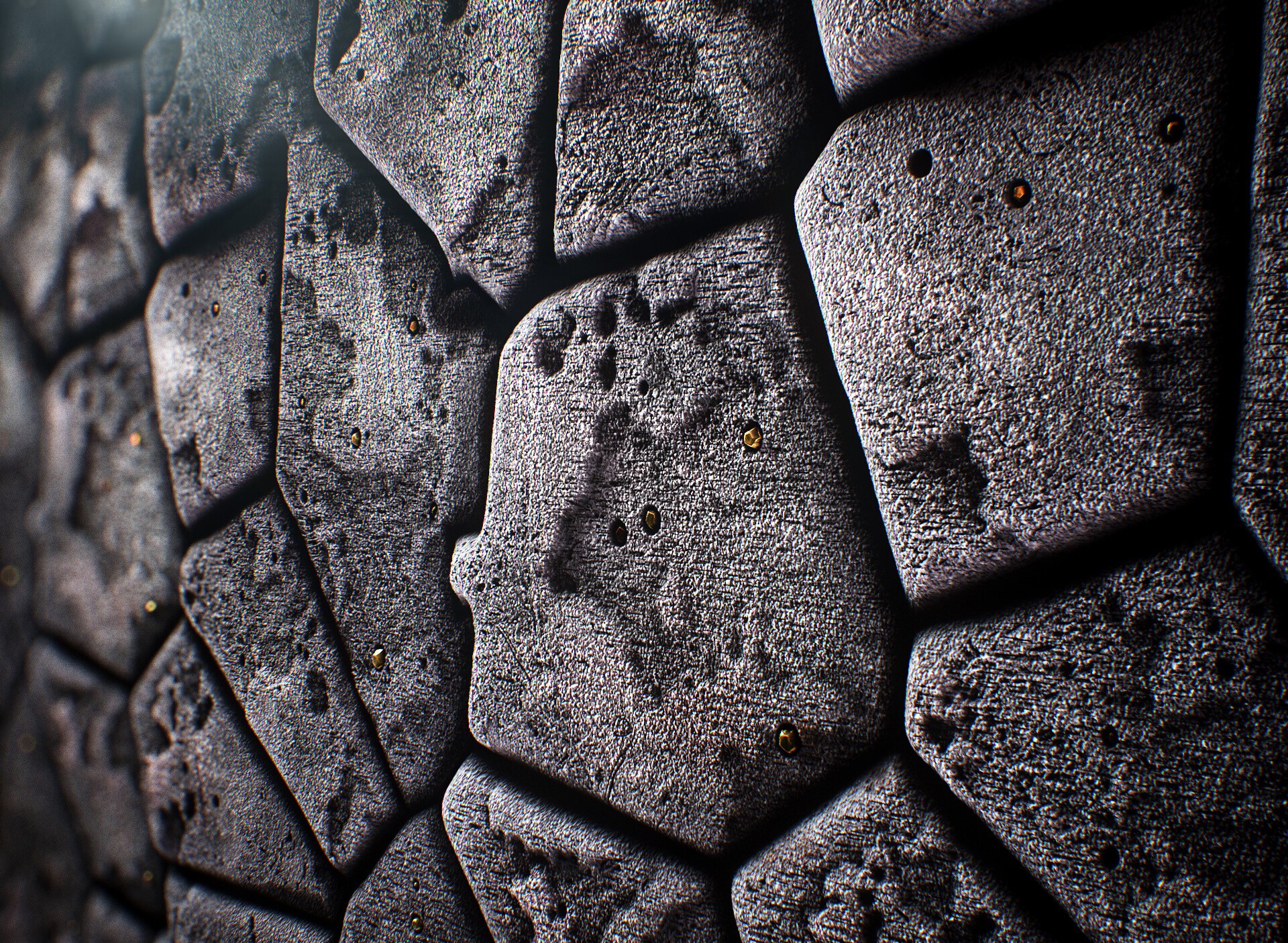Utility
An innovation in construction where three-dimensional chunks of stone interconnect in unique configurations from loose bags of sand and gravel of varied sizes. These bags are made to conform to uneven surfaces and left to harden into walls. This made it easier to then be plastered over and painted.
Manufacturing
Small Bag Layers
- Hemp bags are then bulked with dirt, grit, sand, rocks and animal bones
- Soak the mixture in a binder of water, volcanic ash and flammable mud
- Tightly tie the bags closed and stack them on top of each, into a wall, while still wet
- Let them morph/sag against each other so that the impression at the top face of a bottom bag, is the same as the impression at the bottom face of a top bag
- Once they harden, rip away the pieces of exposed sacks and grind down the stone knob that formed behind the sack's knot
- Set fire to the completed wall to burn away the remnant fibres
Big Boulder Building
- Wooden lattices are constructed and held together with a wicker frame to enclose the eventual wall
- Stretch sheets of cheap fabrics over openings in the wood works and push into a bowl
- Follow the "Small Bag" instructions, but with sacks large enough to hold a grown man
- Sand the large, newly-shaped stones clean so the jigsaw-like pattern is more recognizable
Social Impact
Load Bearing
It is believed that the Mud Men devised this technique in imitation of the monumental architecture left behind by their Kang conquerors. They used it as part of an aesthetic finish with the seemlessly fitted wall only existing on the only side facing pedestrians. In turn, the Kang's successor state would improve upon their innovation to make larger, earthquake resistant buildings.
Access & Availability
Though it is a relatively cheap process, the materials are not so widely available across the corners.
Complexity
Cellular polygonal masonry, aesthetically impressive, and easily repairable
Discovery
The practice has been handed down by mud descendents for centuries, with different tribes cooking their own recipes adapted to their environment.
Related Items
Related Materials




Comments